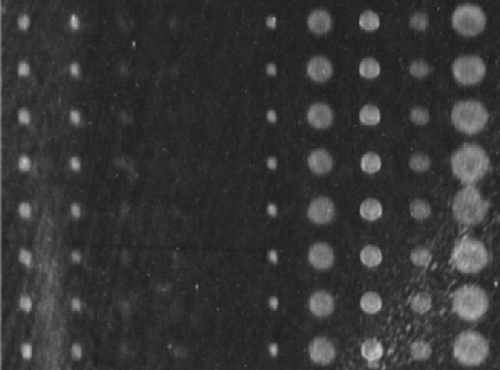Arrayed Imaging Reflectometry
Simple methods for detecting and quantifying proteins in a multiplex (many proteins at once) fashion would potentially have considerable utility in the construction of point-of-care diagnostic devices, as well as tools for basic studies in biology and medicine. One technique under study by our group is Arrayed Imaging Reflectometry, a method whereby an antireflective coating (a
in the image below) on a silicon chip is perturbed by protein binding (b
in the image below) resulting in reflected light that's proportional to the amount of protein bound. The image shows an example microarray of proteins detected in human serum; we're currently working on applying the technology to several disease areas including cancer, immunology, and wound healing.

An AIR microarray image showing detection of proteins in human serum image.

Schematic of Arrayed Imaging Reflectometry. (a) We start by creating an antireflective coating on a silicon chip. When target molecules bind capture antibodies on the surface of the chip (b), light reflects with an intensity proportional to the amount of material captured.
Researcher: Benjamin L. Miller, Ph.D.
Carbohydrate and protein recognition, molecular design, and biomolecular sensing
